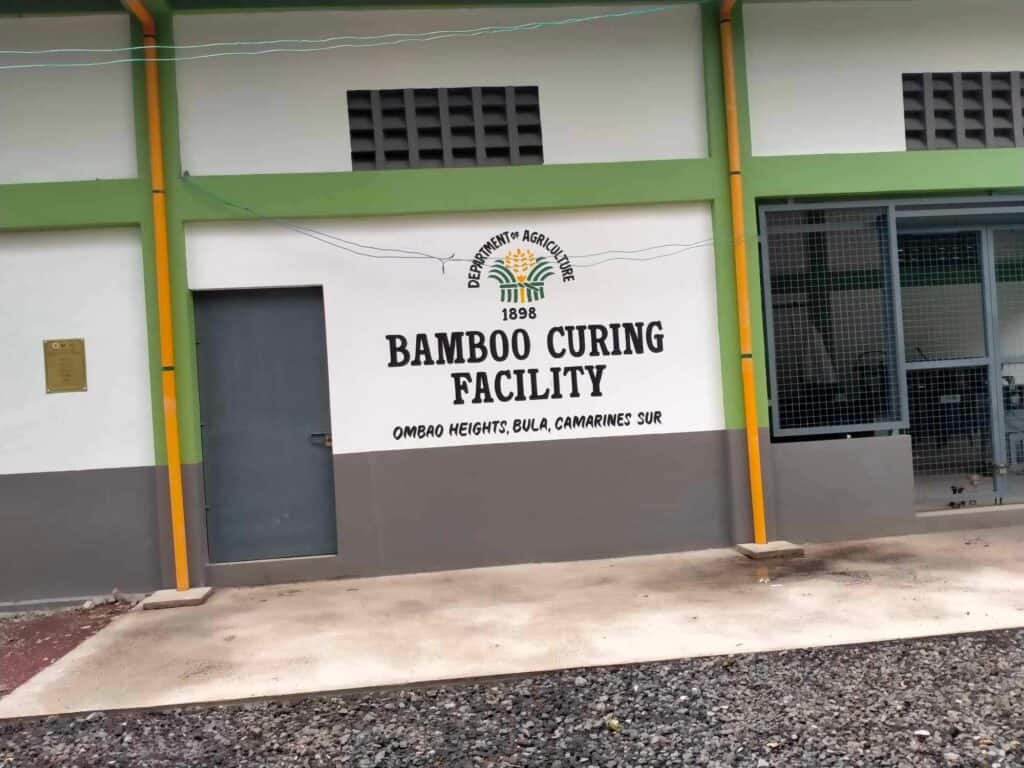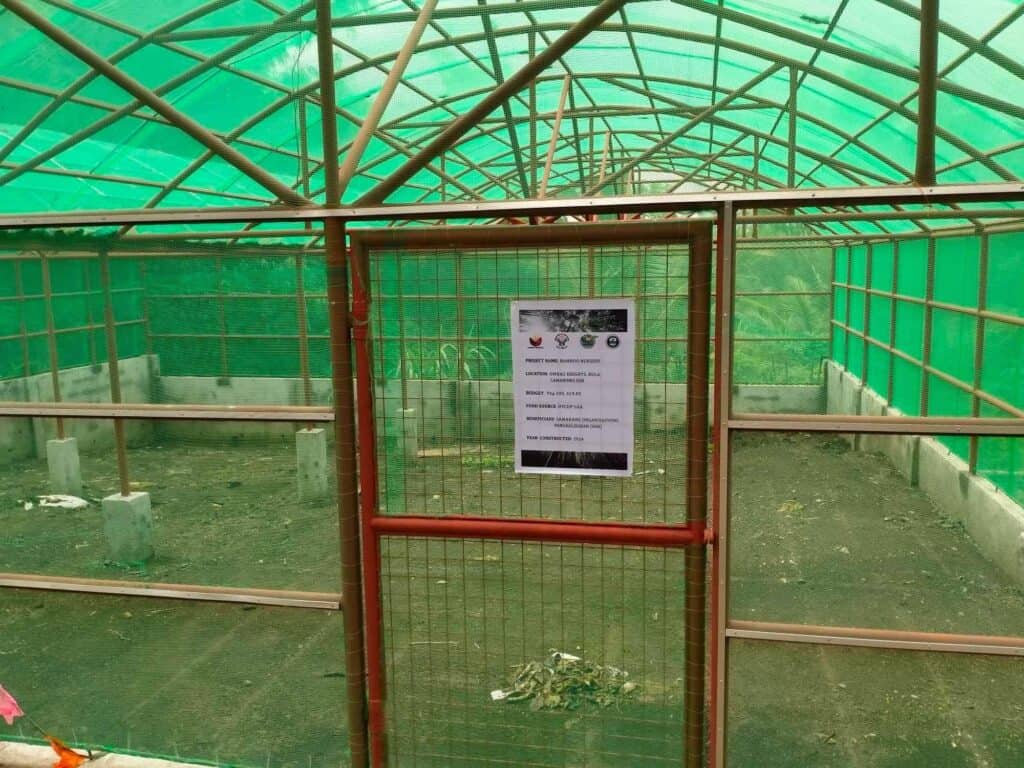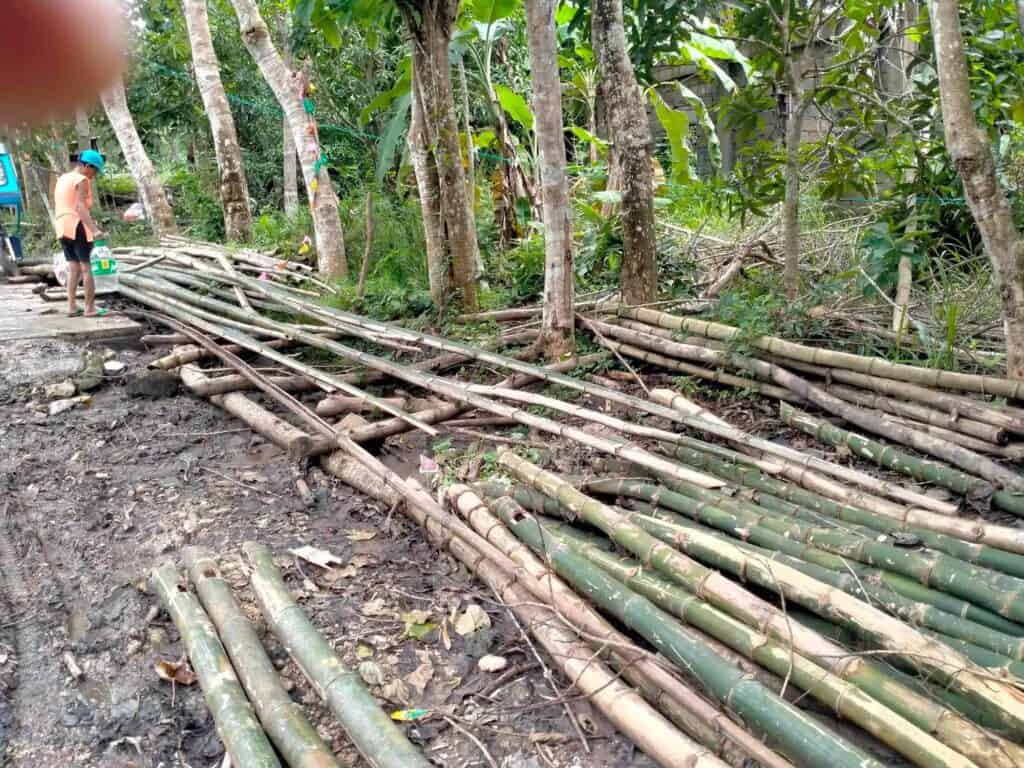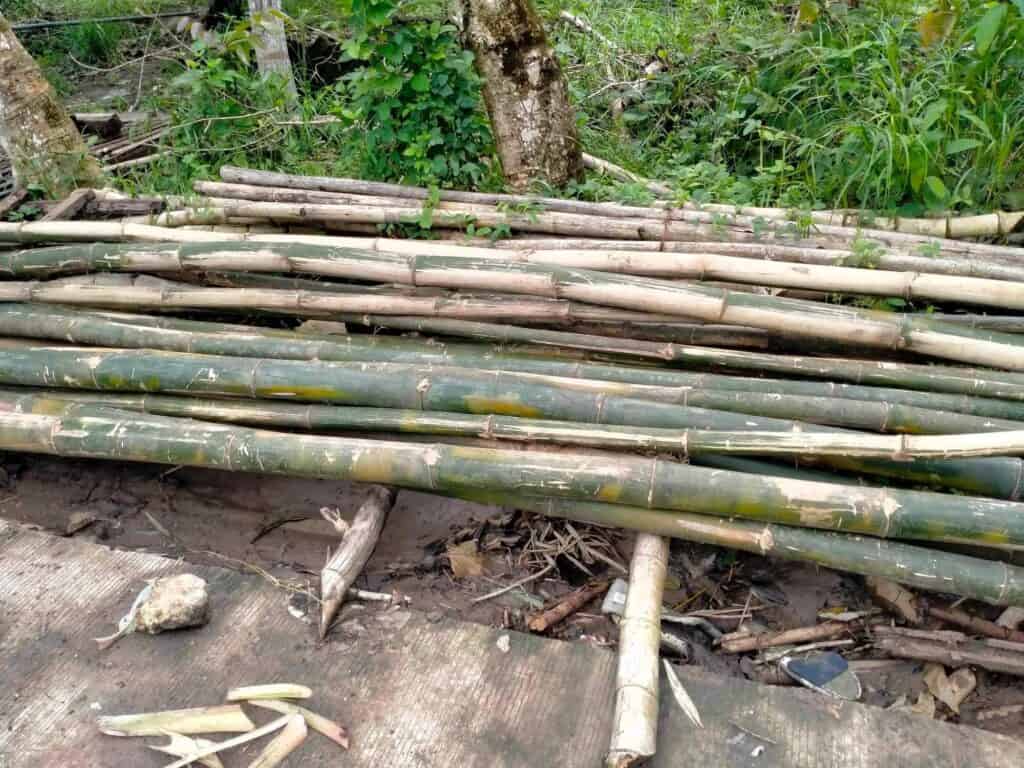In Bula, Camarines Sur, growing bamboo offers the community a more sustainable source of livelihood. Locals are placing their trust in bamboo’s potential—not just as an economic resource but as an effective player in creating an eco-friendlier future.
Just like mangrove, cultivating bamboo is also seen to have the ability to absorb carbon, making it a valuable resource for combating climate change. It has various economic uses, serving as a complex material for things like floor tiles, textiles, and affordable housing, among others.
Bula, known for being the “Bamboo Capital” of Camarines Sur, received a much-needed boost with an infrastructure of a curing facility and nursery under the Department of Agriculture’s (DA) High-Value Crops Development Program.
The facility, for the first time in the Bicol region, allows bamboo to be processed more efficiently, minimizing labor, and will cure damage caused by pests like “bokbok.” With the development, what used to be a manual and time-consuming process can now be completed with greater ease and quality bamboo poles.
DA’s Initiative
In celebration of World Bamboo Day on September 18, the DA and the community of Bula inaugurated and turned over the P6.5M worth of Bamboo Curing Facility and Bamboo Nursery to the Samahang Organization PangKalikasan (SOK) in Ombao Heights, Bula, Camarines Sur, on September 17.
DA sees potential in growing bamboo—and Bula, known for producing bamboo, pushes the first curing and nursery, considering that 20 out of 33 barangays grow bamboo.The bamboo facility was worth P4.2M. Meanwhile, the P2M was spent on the equipment serving as a starting enterprise for the organization.
According to Lovella Guarin, the spokesperson of DA, the agency provides a processing, curing facility, and nursery to modernize their production process. The curing facility will produce bamboo slats that can be used in various crafts, improving efficiency and product quality.
“Emerging industry na iyan dito ang bamboo kaya tinulungan lang ng Department of Agriculture (DA) yung mga bamboo growers dito sa Bula na magkaroon ng processing, curing facility, and nursery para hindi na mano mano ang kanilang paggawa. Itong binigay na curing facility ang magiging output nila dito ay mga bamboo slats na pwede na nilang magamit doon sa mga handicrafts na ginagawa nila,” Guarin shared.
It took almost a year for the facility to be finished; the evaluation of the project is in the hands of the local government unit (LGU) of Bula, securing a report on the process, progress, and effectiveness of the nursery and curing facility.
Meanwhile, Rodel Tornilla, the DA Bicol regional executive director, mentioned that Bula is recognized for its production of bamboo crafts and furniture, as bamboo is the town’s designated “One Town, One Product (OTOP).
“We support bamboo as raw material for livelihood construction purposes due to its physical characteristics and the ability to grow in diverse climates and habitats. Ang tawag nga sa bamboo ay ‘super grass’ because it is the fastest growing plant,” Tornilla said.
Ombao Heights, Sto. Niño and Kinalabasahan are the three (3) barangays in Bula that are included in the nursery and curing facility; however, the community is welcome to participate, visit, and be aware of the development program.


Community Response
SOK is a community-based group representing bamboo growers from the mentioned three (3) barangays in Bula. Originally, the group was established in 1996 with the support of the Department of Environment and Natural Resources (DENR) and was formed to protect and manage the area’s forest resources. Over the years, the organization has grown significantly, having 85 members and advocating for the environment with the same goal of cultivating bamboo.
Led by Eddie Bermas, the president of the organization, SOK is the only organization in the Bicol region that processes the requirements; hence, the funding and guidance for the project were granted by the DA. The organization is described as one of the striving groups aiming for livelihood, prompting to get the support of the DA and other partner organizations.
Bermas said that the initiative truly helps them in terms of livelihood and cultivating bamboo, knowing that overharvesting will never be a challenge for the organization as they can now cure it in the facility; it will aid them in saving time and producing quality bamboo.
“Dati, mano-mano lang ang paggawa namin ng kawayan. Ngayon, dahil sa curing facility, mas madali na at mas mataas ang kalidad ng mga produkto namin. Malaking tulong ito sa aming komunidad,” Bermas said.
The production process will see some changes, but they won’t be too drastic. According to Bermas, the tasks that used to take a week now take less time.
The selling price of bamboo varies, ranging from P40 to P60. For larger bamboo poles, which are about 70 to 80 feet long, they command a higher price. In terms of volume, a single truck can carry around 400 poles, this is equivalent to a weight of around 6,000 kilos.
However, the volume of bamboo delivered still depends on the order requirements.
As the bamboo industry in Bula continues to grow, there is a push to elevate bamboo products to world-class standards. The organization envisions a future where bamboo is not only a source of income but also a symbol of sustainable and inclusive development.


Green Tall Grass of Hope
Beyond its economic benefits, bamboo cultivation has a positive environmental impact. Known as the tallest grass, bamboo is a natural ally in soil erosion control and flood management.
The nursery facility not only provides a steady supply of bamboo seedlings but also promotes reforestation efforts, encouraging members to plant at least ten bamboo plants each.
Despite the progress, the bamboo industry in Bula faces challenges, particularly in transportation, which is often disrupted by typhoons. However, the recent improvements in farm-to-market roads have made it easier to transport bamboo products to neighboring cities like Naga, Albay, and even to the Rinconada area.
SOK is also working closely with the Department of Trade and Industry (DTI) and other agencies to explore further opportunities, including the possibility of establishing a bamboo factory. It will not only increase production capacity but also provide more jobs for the community.
“Malaking [tulong] po ito sa aming organisasyon, lalo na po a tatlong barangay malaking tulong po ito saaamin sa arganisasyon naka-alalay po sila saamin, Ako po ay nag aano na lahat tayo magtanim na ng kawayan lalo na yung dito saamin,ine-encourage ko kayo na magtamin ng bamboo para magkaraon na tayo ng bamboo factory sa kawayan,” Bermas said.
SOK believes that “bamboo plywood” can be cultivated to replace traditional plywood. Compared to other trees, bamboo grass only takes five to six years to grow. I Aireen Perol-Jaymalin, Alliah Jane Babila
